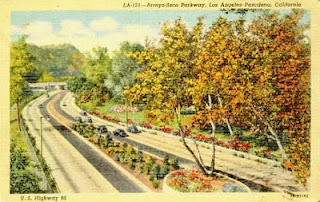I wrote in my Hollywood post that Warner was considered one of the big 5 because they owned all three parts necessary for vertical integration. They owned their own studio, their own stars, and their own movie houses. We looked at the one in San Pedro, the Warner Grand, last post, and boy was it pretty. The Warner Hollywood Theater (later Warner Pacific) was the first theater Warner built in the Los Angeles area.
The Warner Grand opened in 1931. The Warner Hollywood opened April 26, 1928, but was conceived of as early as 1925. In an LA Times article, it's mentioned that it will cost $1.5 million to build, will seat 4,000, and will be used for first fun films, before they were sent East.
Photo I took of the Warner Hollywood theater. It has the Pacific signage now, since the renaming. You can see a radio tower at the top. That's gonna come up later.So the LAT article mentioned the Warner Hollywood was the first in LA, but the Pantages in Portland was the first on the west coast. Now that made no sense to me, but it allows me to open the door for my next post, the Pantages Vaudeville Theater chain.
Here's what I can't figure out. The LAT article was written in 1925. The theater in Portland was only known as the Pantages from 1927-29. Now that LAT article mentions it's being renovated for reopening. The theater in Portand was the Hippodrome from 1917-1925, then there's the two year renovation gap. I guess the name was already common knowledge.
So the facts are these. Warner Bros. didn't become a major player until the late 20s. That map I showed in my Hollywood post, with all the Hollywood studios relative to the Studio Club. I misread that (like I said, this is my historical journey). Burbank, First National. That's not a bank! I assumed, cause it sounds like a bank. First National was a movie studio, founded in 1917, which merged with Warner Bros. in 1928.
See First National was a theater chain, but they decided to start producing films in 1924. They bought that big lot out in Burbank, that now is the Warner Bros. studio lot. It all makes sense! Warner made a ton of money in 1927 after releasing the first talkie, The Jazz Singer. So they start building theaters, and they merge with First National and suddenly have access to a lot more. That's how WB became one of the Big 5!
So if the Warner Hollywood was finished in April, 1928, that's before the merger with First National. Like I mentioned at the top, it was Warner's first run theater, many premiers were held there. Then the films would be shipped back East. That antenna on top of the building, that was for broadcasting KFWB, the station Sam Warner launched in 1925 and which is still broadcasting today!
Looking down Hollywood blvd, 1930s. You've got the Warner's theater sign, the broadcast tower, and oh so much more.
The first film shown at the Warner Hollywood was a talking film called Glorious Betsy. Warner called its sound film process Vitaphone - after the merger with First National, all of First National's theaters had to be fitted to show Vitaphone films. Like 3D today, theaters had to modernize to play a sound track during the movie. Amazing.
The Warner Hollywood also gives me a platform to talk about two other things, and use the 3D analogy again. When it was conceived, in the 20s, radio was the big home entertainment, and seen as a companion to, not a competitor with movies. In the 50s, TV was seen as a huge threat to the movie industry, which is when they came out with the widescreen format.
When TV was first launched, it was done in the same box format movies were filmed in at the time. So movies switched to widescreen in order to offer something different, and to prevent TV from being able to show never movies in their original format (anyone with a VHS remembers "this film has been edited to fit your screen") TV was such a novel thing, you couldn't just redesign it, no one would buy a new new TV. Then it just became the way of things, until flatscreen technology made widescreen television readily available. That's why 3D has become so huge, the movies feel they have to constantly differentiate themselves from the home experience. Of course, technology moves so fast now, there are already 3D TVs.
Jumping back to the Warner Hollywood, it was one of the few theaters in Hollywood big enough to fit a widescreen, and actually converted to Cinerama (ooo, there's another post, the Cinerama craze still immortalized in the Cinerama Dome on Sunset). As a result, the Warner was able to keep showing films all the way into the 90s.
So a bit of a jumbled history of a theater in Hollywood. It looks like it's just an old building, but it holds the history of two motion picture companies, film history, radio history, hollywood blvd history, and LA history. This is why I love old buildings.
















